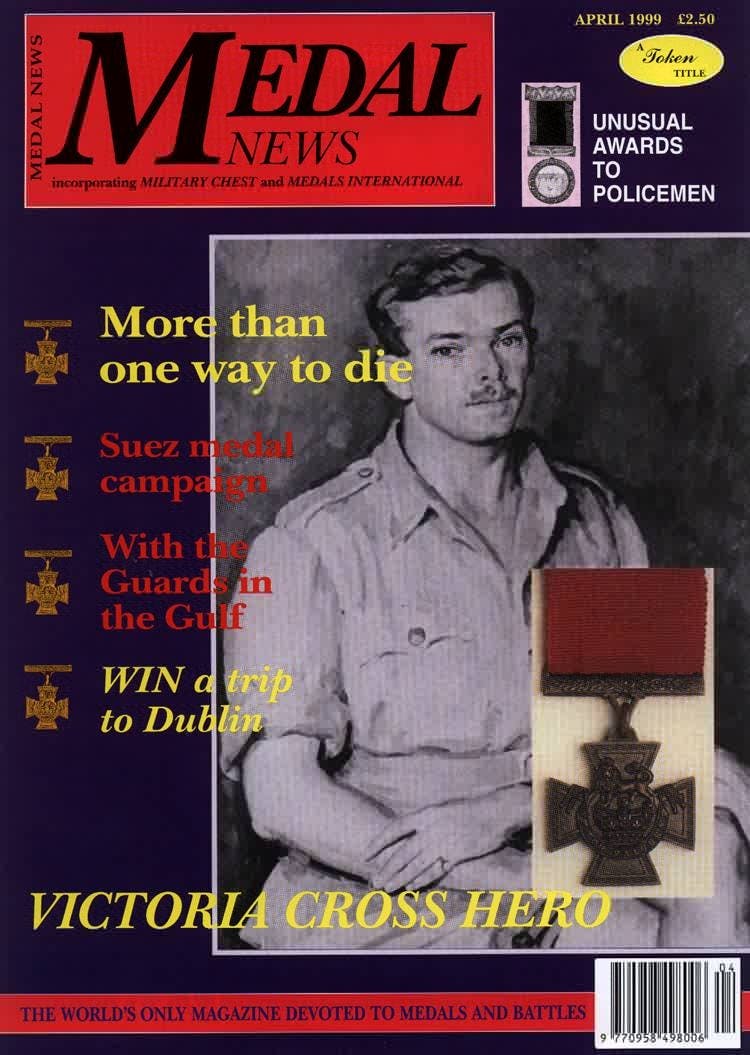WIDENING THE DEBATE - NO LONGER AVAILABLE
Volume 37, Number 4, April 1999
THERE has been some correspondence on the internet recently about whether medal groups which have identifiable but un-named medals "missing" should be "completed" by the addition of those medals. I believe that this is such a basic issue for both collectors and dealers that it deserves a wider airing. (For those with internet access, and who have not yet found this website, you can reach it via www.medal.net ) The original question was raised by an Australian correspondent, who was concerned that adding, say, an un-named gallantry medal, to a group which was known to lack it, might be seen as (at best) misleading unless the next owner of the group was told specifically that this had been done. The responses from other respondents were very interesting, and certainly not uniform. In fact, the opinions expressed varied considerably. One correspondent was completely happy to add any un-named medals necessary to complete groups where these medals were always issued un-named, for example, orders and decorations, or where British and foreign medals almost always came in pairs, like Turkish Crimea Medals with British Crimea Medals, or Khedive's stars with British Egypt Medals, when the un-named foreign medal is missing. Others took the view that it was in order for medals to be added for display purposes, like an un-named Distinguished service Order, or a bar to the 1914 Star of a World War I group, as long as the fact that this had been done was communicated to the next owner of the group. However, everyone seemed to be clear that no medals which had originally been issued un-named ( like Crimea Medals ) should be newly named to fit a group, nor that any medal should be erased for the same purpose. There were at least three interesting points mentioned that clouded the issue for same of the respondents, and which, I would suggest, have concerned many other collectors. The first is that no collector knows whether all medals in the group that he is buying are original to that group. Perhaps a previous owner or dealer put an un-named order or decoration with named campaign medals to "complete" the group. The second comment was that there might have been documentary or photographic evidence that proved that the recipient did not in fact claim a medal at the right time, therefore making the group "complete" without it. This is further complicated by the fact that ( allegedly ) the south African Mint is issuing Queen's south Africa Medals to the descendants of south African colonial soldiers to whom medals were not issued over 90 years ago. In 100 years time, asked the respondent who reported this information, will these medals be viewed as fakes, because the naming style differs from the "norm"? A third issue was raised by a collector of Indian medals, who has noticed in dealers' lists gallantry medals for World War II being offered with un-named World War II campaign medals, despite the fact, he says, that most Indian medals of this period were issued named. Clearly, in these cases, someone has put the group together at some time, and collectors of these items should beware in case the recipient was not entitled to all the added medals. Other issues were also raised as the debate widened. A collector in the United states, where orders, decorations and medals are nut named, but where, he says, "there are more different types of ribbon devices than medals, and one often encounters U.S. medals with missing attachments such as oak leaf clusters, battle stars, etc. This often occurs because the medals were issued without the devices attached". should these attachments be replaced where appropriate without passing on the information to the next owner? What about court-mounting groups that were never court-mounted by the recipient? What about re-ribboning, when no collector or dealer can guarantee that the ribbon on a medal is "original"? One contributor to this argument believed that ribbons should be regarded as consumables; as they wore out, they could be replaced, and so re-ribboning was simply to be expected, and therefore need not be mentioned-Indeed, no soldier would go on parade with dirty medals or ribbons
Order Back Issue
You can order this item as a back issue, simply click the button below to add it to your shopping basket.

